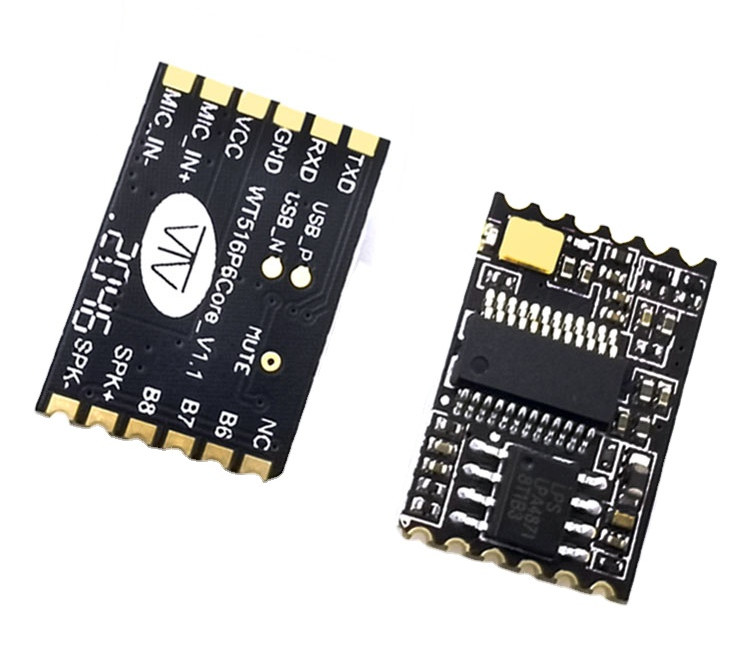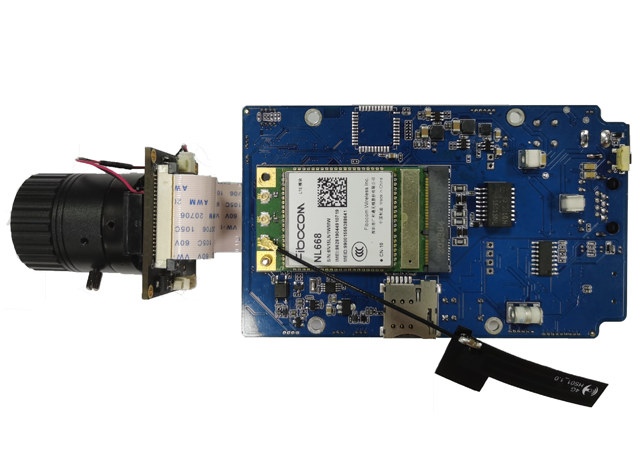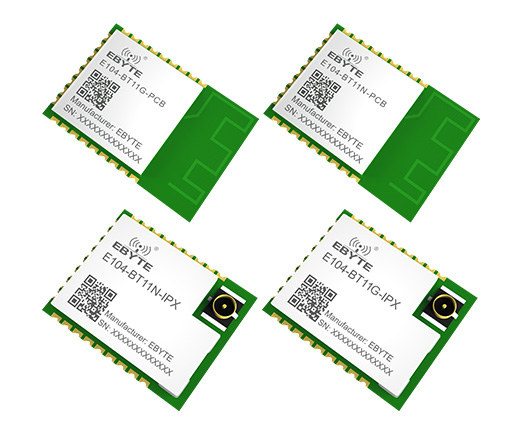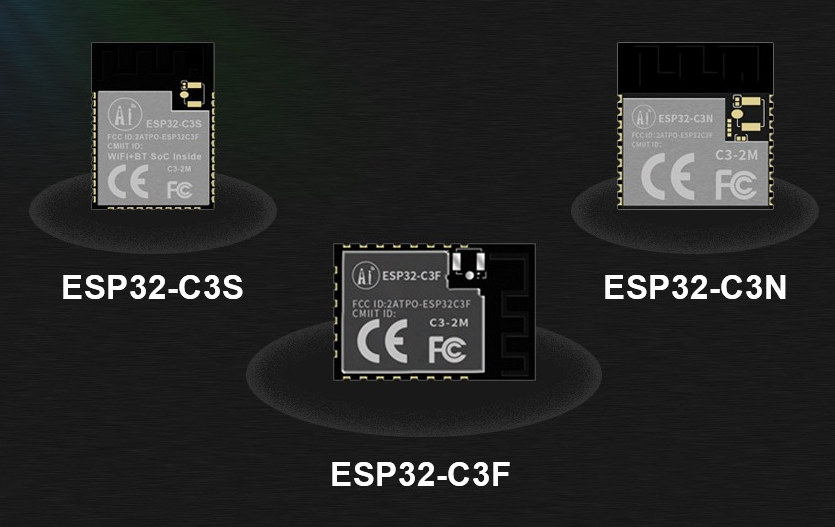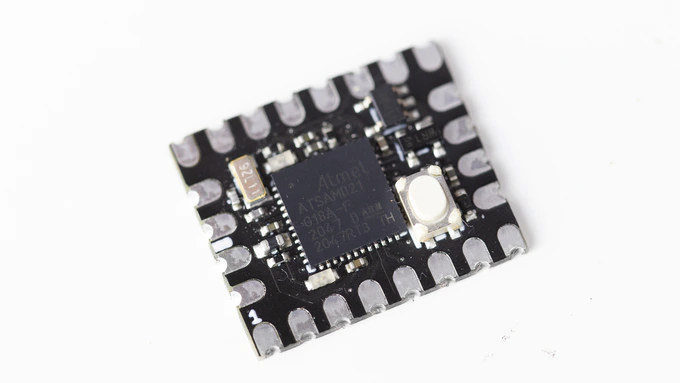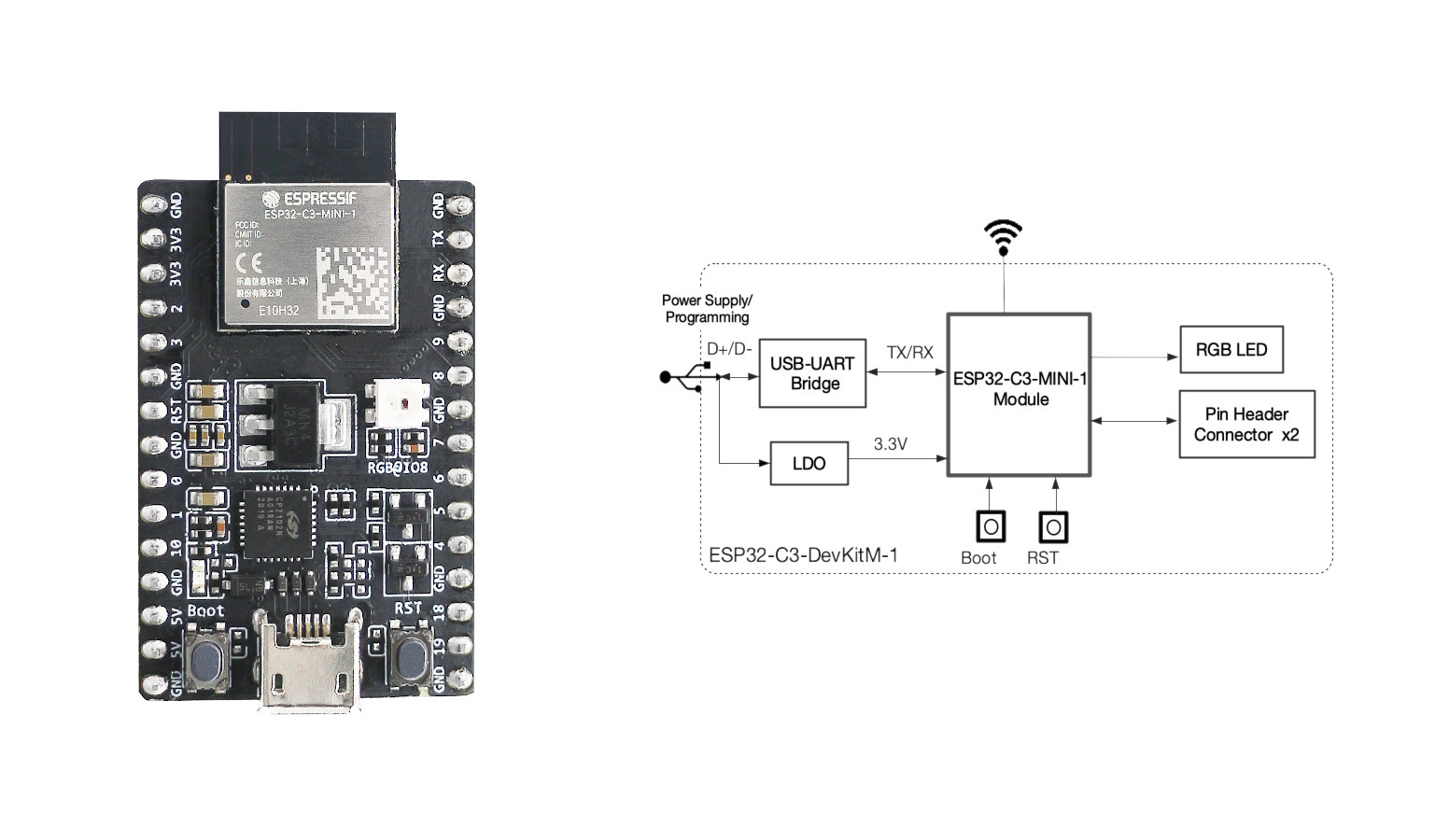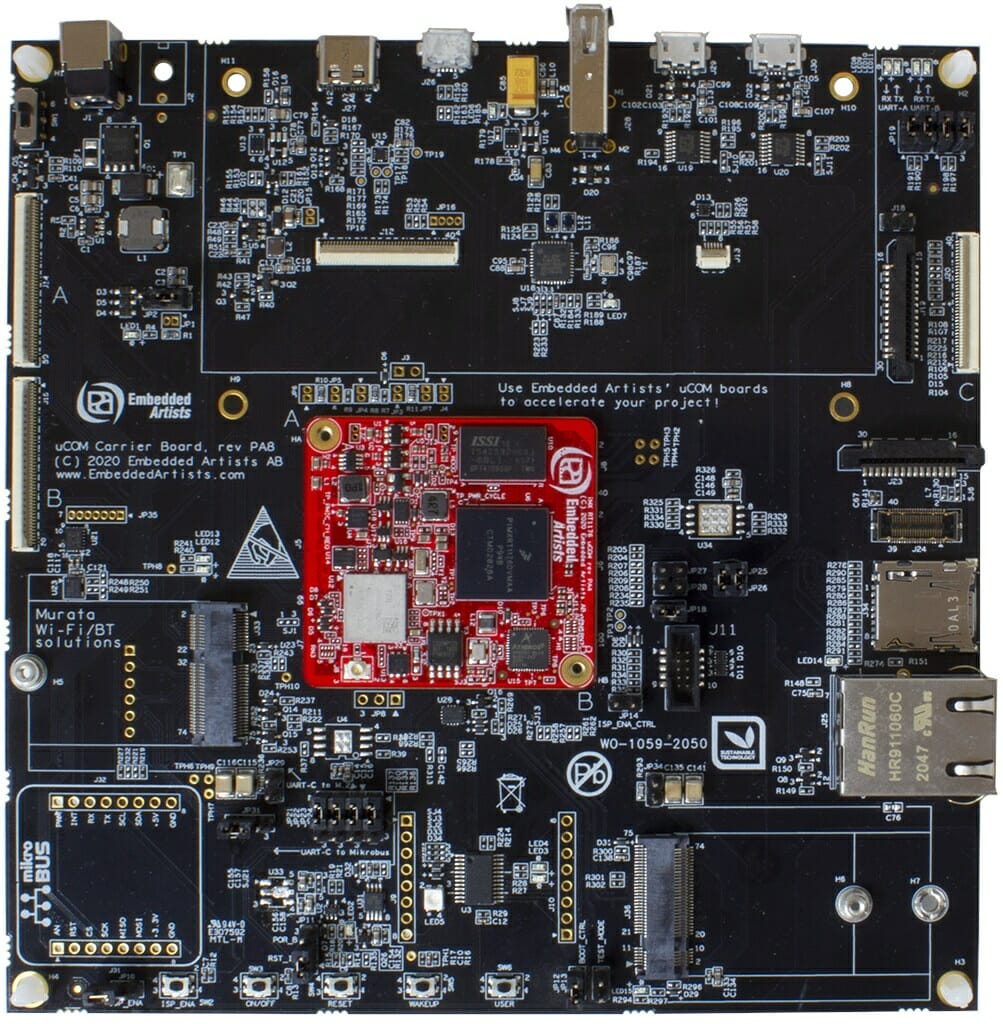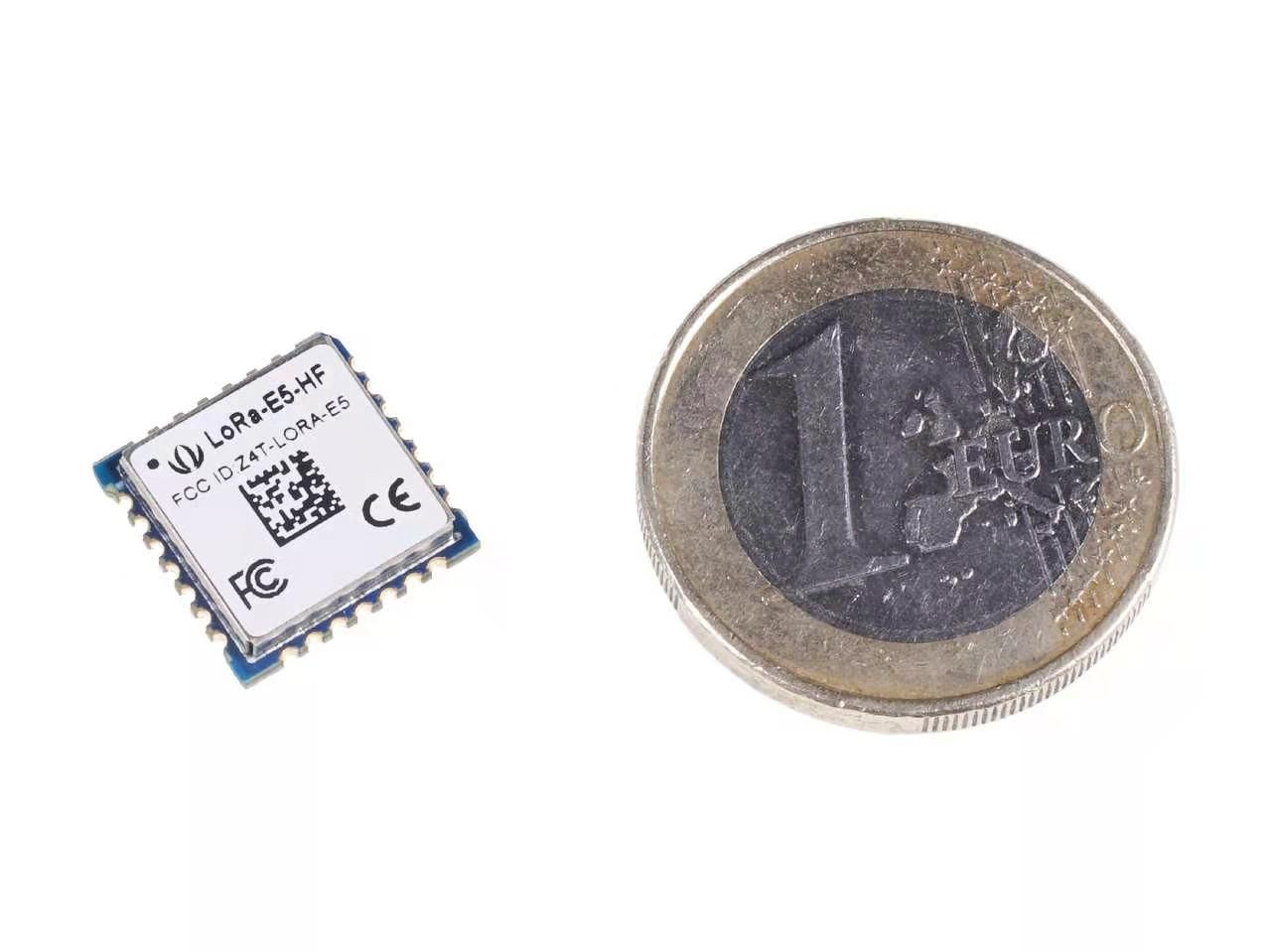I recently wrote about a Linux microwave oven with a built-in voice assistant, and somebody mentioned a quad-core SoC was overkill, and instead US516P6 microcontroller designed for offline voice commands would be a better fit. It’s all good, but finding information about Unisound US516P6 proved to be quite a challenge with not much public information, and most in Chinese. But then I noticed Wireless Tag WT516P6Core offline voice module, and since I have contact with the company I managed to get a few more details, notable with regards to the development tools. US516P6 module specifications: MCU – Unisound US516P6 RISC microcontroller (likely Andes NDS32 based) @ 240 MHz with FPU, DSP instruction, FFT accelerator, 242KB SRAM, 2MB flash Audio – Built-in power amplifier I/Os – 12 castellated holes with UART, GPIO, microphone input, speaker output, VCC, and GND Power Supply – Built-in 5V to 3.3V, 3.3V to 1.2V LDO to […]
SigmaStar SSC33x Camera SoCs are pin-to-pin compatible with Hisilicon Hi3516/Hi3518 processors
We’ve been writing a fair amount of posts about SigmaStar SSD201/SSD202D processors for smart displays in recent times. But the company also has various camera SoC’s with SSC333, SSC335, SSC336, SSC337, SS338, and SSC339 parts. Those processors feature one or two Cortex-A7 core, embedded RAM, as well as an optional AI accelerator called DLA (Deep Learning Accelerator). The chips manufactured using a 28nm or 22nm process, with the latter being used for parts with the AI accelerator. Most of the Sigmastar SCC33x processors also happen to be pin-to-pin compatible with HiSilicon Hi3516 or Hi3518 SoC that are found in a wide range of IP cameras. Let’s take SSC336D/SSC336Q processor as an example since it comes with the AI accelerator and we have a datasheet courtesy of linux-chenxing.com. SigmaStar SSC336D/SSC336Q camera SoC key features & specifications: CPU – Dual-core Arm Cortex-A7 processor @ 1 GHz with Neon and FPU Embedded Memory […]
Ebyte E104-BT11 Bluetooth Mesh module features Silicon Labs EFR32MG21 MCU
Ebyte E104-BT11 is a Bluetooth Mesh module offered in four variants with support for gateways (G) and node (N) versions, as well as PCB or IPEX antenna versions. Interestingly it is based on Silicon Labs EFR32MG21 Cortex-M33 microcontroller also found in ITEAD Zigbee 3.0 USB dongle, so it’s not impossible that it could be repurposed for Zigbee or Thread with firmware from Silabs. Ebyte E104-BT11 module specifications: Wireless MCU – Silicon Labs EFR32MG21 Arm Cortex-M33 microcontroller @ up to 80 MHz with DSP and FPU, up to 1024 kB flash, up to 96 kB RAM, 2.4 GHz IEEE 802.15.4 for Bluetooth LE, Zigbee, or Thread Wireless connectivity Bluetooth Mesh/BLE support with default firmware, up to 10,922 devices supported Max Tx power – 20 dBm Rx sensitivity- -88 to -97 dBm (-97 dBm typ.) Max data rate – 1Mbps Antenna – PCB antenna up to 200-meter range, or IPX antenna up […]
AI-Thinker introduces 5 ESP32-C3 modules pin compatible with ESP8266 & ESP32 modules
ESP32-C3 is the first RISC-V wireless SoC from Espressif Systems, and at the time of the initial announcement promised to cost about the same as ESP8266 but adds support for Bluetooth 5.0 LE besides 2.4 GHz WiFi, and retain software compatibility through the ESP-IDF framework. We were also told the goal was to provide ESP8266 compatible modules, and AI-Thinker has just announced five new ESP32-C3 modules compatible with earlier ESP8266 & ESP32 modules as shown in the table below. The table above is quite low resolution but that’s the best I could obtain from the company… It’s also a complete mess, not showing all alternative ESP8266 or mistaken in board sizes. So I’ll try to give a short summary of differentiating features and equivalent ESP8266/ESP32 modules: ESP32-C3F is meant to replace ESP-12F with a 24 x 16 mm form factor. It does add an IPEX connector, besides the PCB antenna. […]
Minima is a tiny Arduino Zero compatible module with SAMD21 MCU (Crowdfunding)
We’ve covered a fair amount of compact Arduino Zero compatible boards based on SAMD21 Cortex-M0+ microcontroller over the years including Exen Proto, Wemos D1 SAMD21, or Seeeduino XIAO with the latter being the smallest of them all at just 23.5 x 17.5 mm. All those boards come with a USB port (Micro USB or USB-C) by default that makes it easy to work with, but may not be ideal to integrate into projects or final products. That may be why Hamish Morley designed the Minima Arduino Zero compatible module with a size even smaller than the XIAO board at 19.8 x 16.6 mm, and the USB interface exposed through 4 pads instead of a connector. Minima specifications: Microchip SAMD21G18A 32-bit Arm Cortex-M0+ microcontroller @ 48 MHz with 256KB of flash storage, and 32KB of SRAM Expansion – 24x castellated pads (2.54mm pitch) with 18 GPIO pins, including 5x analogue capable, […]
ESP32-C3-DevKitM-1 RISC-V WiFI & BLE board to launch for $8, modules for $1.8+
ESP32-C3 may be one of the most expected RISC-V processors in the IoT world, as it’s eventually expected to sell for the same price as ESP8266 and offers both WiFi and Bluetooth LE connectivity. Some engineering samples of the chip. modules and boards were distributed to developers shortly after the announcement at the end of the last year, but now it appears ESP32-C3-DevKitM-1 board will become available for $8 next month from distributors such as Mouser or DigiKey. Since I’ve never written about ESP32-C3-DevKitM-1 board let’s check out the specifications: Wireless module – ESP32-C3-MINI-1 with ESP32-C3FH4 (105°C) or ESP32-C3FN4 (85°C) 32-bit RISC-V single-core processor, up to 160 MHz, 4 MB embedded flash, 384 KB ROM, 400 KB SRAM (16 KB for cache), 8 KB SRAM in RTC Connectivity – 2.4 GHz 802.11b/g/n Wi-Fi 4 & Bluetooth LE 5.0 USB – 1x Micro USB port for power and programming via USB-UART […]
Embedded Artists launches 1GHz NXP i.MX RT1176 Crossover MCU module and devkit
Microcontrollers used to be those cute little chips clocked at 8 MHz, but it’s now common to have MCUs clocked at one or two hundred Megahertz, and with Cortex-M7 cores, several hundred Megahertz is now possible, and NXP even pushed the limit to one Gigahertz with their i.MX RT1170 series of Cortex-M7/M4 Crossover MCUs announced over a year ago. Embedded Artists has now made a computer-on-module and a corresponding devkit based on NXP i.MX 1176 Crossover MCU clocked at one Gigahertz. iMX RT1176 uCOM MCU module delivers up to 6468 Coremarks, comes with up to 32MB SDRAM, 16MB QSPI flash, optional WiFi and Bluetooth, and various peripherals in a tiny 45x42mm form factor. iMX RT1176 uCOM module Specifications: SoC – NXP i.MX RT1176 processor with Cortex-M7 core up to 1 GHz/800MHz (Commercial vs industrial), Cortex-M4 core up to 400/200 MHz, 2MB internal SRAM, 2D GPU with OpenVG 1.1 support and […]
$10 LoRa-E5 STM32WL module offers LoRaWAN networking in a 12x12mm package
Over the years, we’ve seen many LoRa modules combining STM32 microcontroller with Semtech SX12xx wireless transceivers, so that’s probably why STMicro decided to create the first LoRa SoC with STM32WL that was launched last year. I’ve just been informed a tiny (12x12mm) LoRa-E5 module based on STM32WL LoRa SoC working with 868 MHz and 915 MHz bands had recently launched on Seeed Studio for $9.90. LoRa-E5 key features and specifications: SoC – STMicro STM32WLE5JC Arm Cortex-M4 MCU @ 48 MHz with 256 KB flash memory, 64 KB SRAM, SX126x LoRa radio LoRa connectivity Tx power – 22dBm @ 868/915MHz -136.5dBm sensitivity for SF12 with 125KHz BW 158dB link budget Embedded LoRaWAN protocol, AT command Frequency ranges – EU868, US915, AU915, AS923, KR920, IN865 I/Os – 3x UART, 1x I2C, 1x 12-bit ADC, 1x SPIO Supply Voltage – 3.3V Power Consumption As low as 2.1uA sleep current in WOR mode Tx […]


